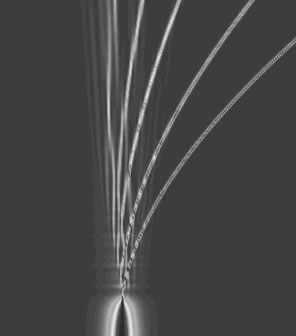Projects
Chalcogenide Nanowires
The chalcogenide microwire is a compact and versatile nonlinear engine for application including lasers, wavelength conversion, optical switching, amplification, and supercontinum sources. We develop the first practical version of the highly nonlinear optical nanowire. With a length in the order of the centimeter, this device holds the highest nonlinearity coefficient achieved thus far in a glass with γ = 185W-1m-1 and replaces >1 km of commercially available highly nonlinear silica fibre. The microwire with a diameter in the order of a micron is made of chalcogenide glass, it can be pigtailed to standard single mode fibres from adiabatically tapered ends, its chromatic dispersion coefficient is adjustable within a wide range from normal to anomalous, and it is conveniently contained within a polymer jacket to ensure mechanical robustness and optical insulation from the external environment. The nanowire is currently the subject of 3 patent applications pending approval by the Canadian and US patent offices.
Self-Pulsating Laser Sources
We develop self-pulsating fibre lasers based on the regenerative properties of self-phase modulation, nonlinear polarization rotation, and soliton self-frequency shift for applications such as supercontinuum generation, mid-infrared sources, device characterization and data storage. The operation of those pulsed lasers also include mode-locking and Q-switched.
Mid-Infrared Light Sources
Wavelength converters are known to be fundamental component in optical communications systems and have more recently become an approach of great promises to generate light in the mid-infrared. We use this approach in combination with the wide transparency window of chalcogenide glasses to make wavelength converters from widespread light sources in the 1550-2000 nm wavelength range to an output of 2000 nm up to 10000 nm with broad tunability.
Optical Signal Monitoring
We have developed innovative and low cost solutions to monitor the signal quality of high data rate optical fiber communication systems. In contrast with most electronics-based technologies, solutions provided by nonlinear optics do not require high data rate photodetection and subsequent electrical processing. Optical technologies thus provide advantages in terms of simplicity and costs when facing the signal monitoring of high-data rate optical signals. Instead, our solutions precisely monitor the Polarisation Mode Dispersion (PMD) and the Optical Signal to Noise Ratio (OSNR) of high data rate signals using simple nonlinear signal processing and optical power detection.











